Plant once, harvest again and again? This works out! We show you ten perennial vegetable plants that make everyday gardening easier.

A vegetable patch means one thing above all: a lot of work. The new plants have to be sown and brought forward as early as spring, followed by lots of care and attention before they can finally be harvested. And next year at the latest, the whole thing starts all over again. Wouldn't it be great if you only had to sow plants once and still be able to harvest them every year? Luckily, there are great perennial vegetables that can do just that. Once planted, they can often remain in the garden for many years and still reliably ensure a rich harvest. This not only saves you the hassle of sowing and pre-cultivating, but also a lot of money for seeds and seedlings. Here you can find out which ten perennial vegetables your garden should not be without.
contents
- 1. Kollenziest
- 2. wild rocket
- 3. Jerusalem Artichoke
- 4. rhubarb
- 5. air onions
- 6. Everlasting Cabbage
- 7. Tigernut
- 8. tree tomato
- 9. wild garlic
- 10. artichoke
1. Kollenziest
What is that weird root? Admittedly, the roots of the Kollenziest (Stachys affinis) look a bit strange with their constrictions. In addition, the Asian plant is still relatively unknown in Germany and is rarely cultivated. A garden with Kollenziest is worthwhile - not only is the plant a real treat for the palate and tastes similar to artichoke (Cynara scolymus) or salsify (Scorzonera), it is also easy to grow. In a sunny location with loose soil, the tubers grow almost by themselves and only need to be watered regularly. The tubers can then be harvested from the end of October. However, you should only harvest as much as you actually use, since the bulbous buds are difficult to store. The tubers left in the ground overwinter without any problems and will sprout again by themselves the next year.

2. wild rocket
arugula (Eruca vesicaria ssp. sativa) is probably found in most gardens. But unfortunately you have to sow the salad with the spicy taste every time. The wild rocket (Diplotaxis tenuifolia): It is considered the wild, perennial version of rocket. Above all, its exceptional robustness makes the plant attractive for many garden fans. In a sunny location, the wild rocket only needs to be watered and is even hardy. In addition, the wild rocket sprout stronger the more intensively its leaves are harvested - a real insider tip for all salad lovers.

3. Jerusalem Artichoke
the Jerusalem Artichoke (Helianthus tuberosus) sounds like an exciting exotic. In fact, the tuber was a staple food in Europe for a long time, until it was potato (Solanum tuberosum) was displaced. In recent years, however, the tuber has not only celebrated its return to many kitchens - it is also in many gardens Cultivation of Jerusalem Artichoke to watch again. Here she not only delights our palate with her delicious aroma, but is also a real ornament with her yellow flowers. From autumn you can harvest and enjoy the delicious tubers. Another advantage of the Jerusalem artichoke is that you don't have to sow it again: once the plant is in the bed, it multiplies all by itself with its underground rhizomes. So that the Jerusalem artichoke does not soon take over the entire garden, it is therefore advisable to put in a root barrier before planting or to cultivate the Jerusalem artichoke in a pot.
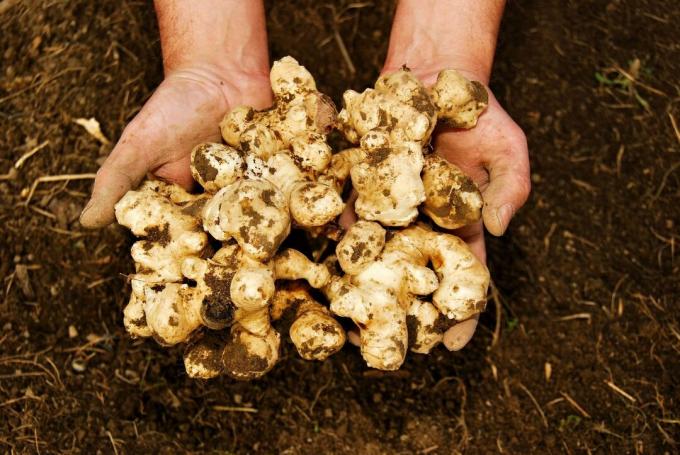
4. rhubarb
A true classic in the garden is the rhubarb (Rheum rhabarbarum). The plant convinces in the kitchen with a delicious sour taste and is in great demand, especially in summer. Fortunately, the rhubarb is not only characterized by its delicious aroma, but also characterized by its longevity: the perennial vegetable can grow in one location for up to eight years linger. In autumn, the rhubarb concentrates its forces on the root and springs with renewed vigour off again, which is why it does not need additional winter protection (except for freshly planted specimens). However, care should be taken when consuming rhubarb: after St. John's Day on 24. June should of the Rhubarb Harvest should be avoided as the oxalic acid content in the stalks increases throughout the year.
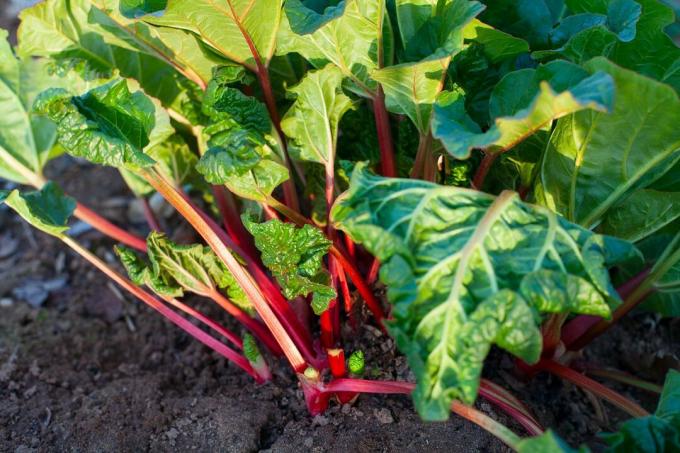
5. air onions
At first glance you might think that aerial onion (Allium x proliferum), also known as the tier onion, is upside down. In fact, the perennial plant not only forms underground tubers, but also so-called brood bulbs on its flower stalks. So you can harvest the air onion not just once, but twice: The young leaves of the air onion are suitable for salads or aromatic herb quark. The underground tubers, on the other hand, can be processed like conventional onions. If you leave individual brood bulbs on the plant, they will eventually break off and form new offshoots - this is how the air bulb multiplies almost as if by magic.
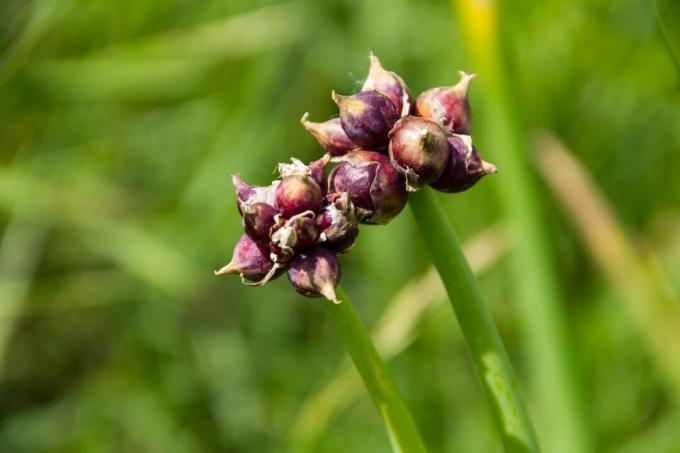
6. Everlasting Cabbage
Most types of cabbage are well known to home gardeners. But have you ever had something from the eternal cabbage (Brassica oleracea var. ramosa) belongs? This plant, which is also known as Irish collards, is characterized by two special properties: Not only is the plant one of the perennial vegetables, the everlasting cabbage can also be grown almost all year round to harvest. Only in severe frost should the perennial plant be given a little rest. The leaves of the everlasting cabbage can be similar to savoy (Brassica oleracea var. sabauda) processed into cabbage or soup and their taste is reminiscent of cabbage (Brassica oleracea var. capitata f. Alba).

7. Tigernut
Actually it comes from Tigernut (Cyperus esculentus) from the Mediterranean region, but it obviously also feels at home in our latitudes. Here it proves to be a very easy-care culture that needs little more attention than regular watering on dry days. Only the winter is a nightmare for the tiger nut, because it is not frost-resistant. In colder areas, tigernuts should therefore be mulched in winter so that the tubers sprout again next year. But the tigernuts are not only suitable for the garden – they are also becoming increasingly popular in the kitchen. The tubers impress with a nutty-sweet taste and are also often used for vegan dishes because of their high fiber and mineral content. They are also suitable for people with intolerance to gluten and nuts and as a healthy alternative to sugar.

8. tree tomato
The tomato (Solanum lycopersicum) remains the favorite vegetable of the Germans. Unfortunately, the plant has to be painstakingly re-grown every year and is not considered to be particularly robust. On the other hand, the situation is different tree tomato (Solanum betaceum), also called Tamarillo, from: This can be up to four years old and is also considered to be very easy to care for. In Germany, however, the tree tomato can only be cultivated in pots because it does not tolerate frost. Depending on the location, it produces its delicious fruits almost all year round. In terms of taste, the tree tomato hardly resembles its namesake - even if the fruit real tomatoes, sometimes confusingly similar, remind you with their sweet and tart aroma rather on plums (Prunus domestica).

9. wild garlic
Who likes the fresh, garlic-like taste of wild garlic (Allium ursinum) likes, should not hesitate to grow the perennial plant in his garden as well. In a shady place with adequate water supply that is Planting wild garlic wonderfully possible and requires little work. Once the wild garlic has settled into the garden, it multiplies by itself and reappears every year. Incidentally, instead of buying the first cuttings for the garden yourself, you can also collect and plant wild garlic in the forest. However, caution is advised here: it can easily happen Confusion of wild garlic with the poisonous autumn crocus (Clochicum autumnale) or the lily of the valley (Convallaria majalis) – so pay close attention to the plants to avoid confusion.
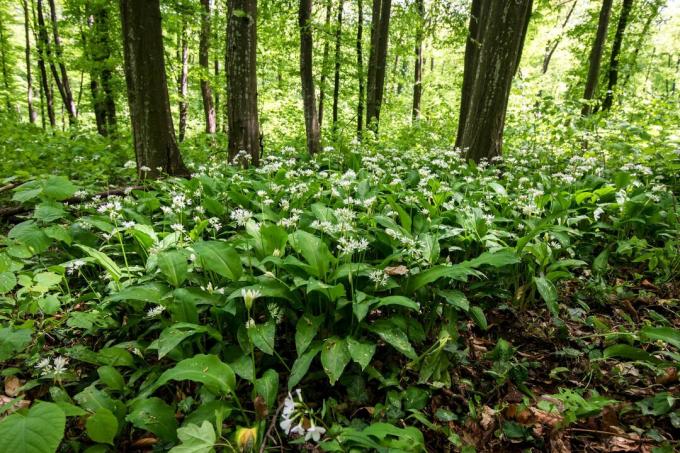
10. artichoke
artichokes (Cynara scolymus) are really a godsend: Not only are they a real delicacy, but also super healthy with lots of vitamin C, potassium and phosphorus. And artichoke cultivation hardly causes any problems either. In this way, perennial vegetables can grow in the garden for up to four years at a time Artichoke Harvest only the flower buds can be picked while the actual plant remains in the ground. However, since the artichoke is relatively sensitive to frost, the right overwintering is the be-all and end-all. On the one hand, you can cut the plant down to a few centimeters and then cover it with a thick layer of mulch (at least 20 cm). On the other hand, the artichoke can also be dug up and hibernate in a frost-free room. Only in this way can the artichoke bring you joy for a long time.

tip: In order for vegetables to be able to grow in the same location for several years, they should be supplied with nutrients regularly. A primarily organic organic fertilizer like ours Plantura organic tomato fertilizer with a three-month long-term effect contains all the nutrients that vegetable plants need and is also gentle and sustainable.
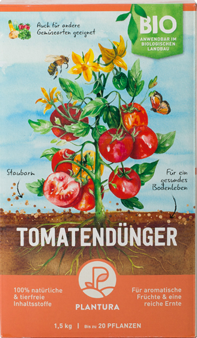
Plantura organic tomato fertilizer
effective long-term effect,
good for the soil, harmless for humans, animals and nature
There are also some types of herbs that survive the winter and can be harvested for several years at a time. Here you will find an overview of hardy herbs for the garden and balcony.
...and receive concentrated plant knowledge and inspiration directly in your e-mail inbox every Sunday!
